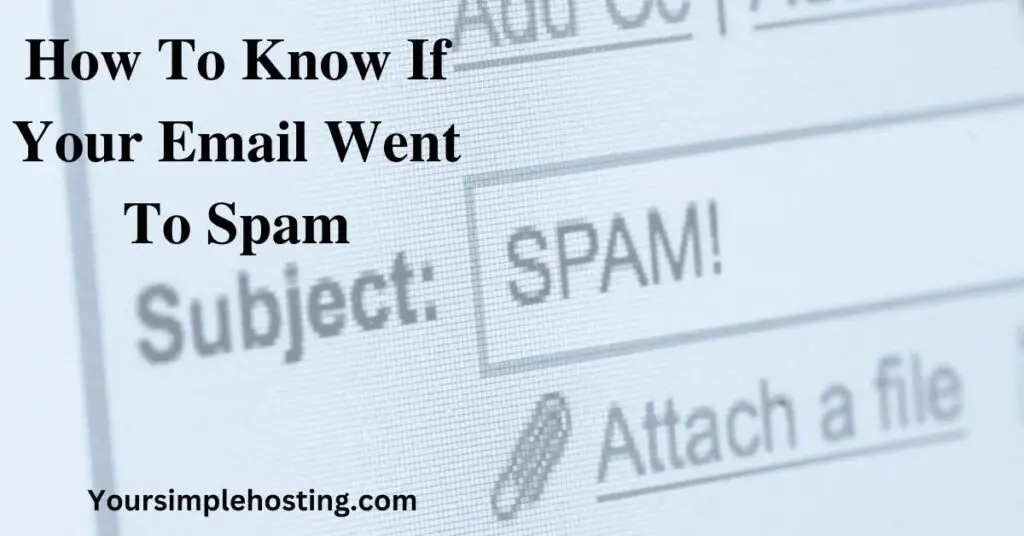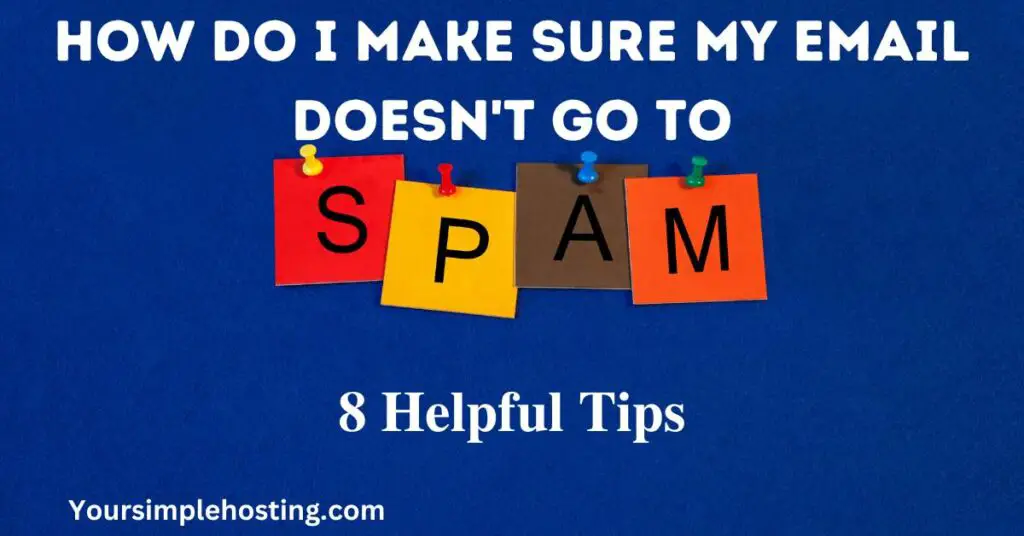Emails are critical in how we communicate in today’s fast-paced digital world. However, sometimes they can get lost or end up in a recipient’s spam folder, leading to missed opportunities and frustrated recipients.
So, it’s good to know if your email has gone to spam and what you can do to prevent it.
Below, I will explore methods for determining if your email has gone to spam and deliver tips for reducing the chances of this happening.

How To Know If Your Email Went To Spam: 5 Clear Signs
Here’s a list of ways to determine if your email has gone to someone’s spam folder:
1. Check Your Sent Items
If you sent an email that hasn’t been delivered, check your sent items folder to ensure it was sent successfully.
2. Request Confirmation
You can send a follow-up email asking the recipient if they received your original message and if it was delivered to their spam folder.
3. Use a Read Receipt
Some email clients and providers offer the option of requesting a read receipt, which will notify you when your email has been opened.
4. Check Your Email Logs
If you’re using a mail server or an email delivery service, you can check the logs to see if the email was successfully delivered to the recipient’s email server.
5. Check Spam Folder
If you suspect your email may have been delivered to the recipient’s spam folder, check your own spam folder to see if their reply or an automated response from their email server ended up there.
If you find their response there, your original email was likely sent to their spam folder.
Suppose your emails are consistently being delivered to the recipient’s spam folder. In that case, you should: avoid spam trigger words and images, maintain a good sender reputation, and follow best practices for email list management. The recipient can also add your email address to their white list of trusted senders.
What Triggers Emails To Go To Spam: 6 Possible Triggers
Many people don’t know what’s triggering spam filters and send emails that end in spam. Your email may end up in a recipient’s spam folder for several reasons, such as the following:
1. Content
If emails contain keywords, phrases, or images commonly associated with spam, such as “earn money fast” or “limited time offer,” it may trigger spam filters.
2. Sender Reputation
If the sender’s email address or IP address has a history of sending spam, future emails from that sender may automatically be sent to the recipient’s spam folder.
3. Recipient’s Spam Settings
Different email providers and clients have spam filters and settings affecting whether an email goes to the recipient’s spam folder.
4. Email Format
You can also trigger spam filters by using certain HTML tags or images.
5. Attachments
Some email providers may mark emails as spam if they contain attachments, especially if they’re in a format commonly used to spread viruses or malware.
6. Email List Practices
If the email was sent to many recipients who did not explicitly sign up to receive emails from the sender, it might be marked as spam.
What Happens If Someone Marks Your Email As Spam
If someone marks your email as spam, the following things can happen:
Filter Placement
Your email will be automatically placed in the recipient’s spam folder and may not be seen by the recipient unless they check the folder.
Reputation Damage
Spam complaints can negatively impact your reputation, resulting in future emails automatically landing in people’s spam folders.
Email Provider Penalties
Some email providers may penalize senders whose emails are frequently marked as spam by limiting their ability to send emails, temporarily blocking their accounts, or even disabling their accounts permanently.
Decreased Deliverability
If many mark your emails as spam, this can reduce your overall email deliverability and make it more difficult for your emails to reach the inbox of future recipients.
If you discover that your emails frequently end up in people’s spam folders, you may need to review your email content, list practices, and sender reputation to identify the cause and take steps to correct it.

How Do I Make Sure My Email Doesn’t Go To Spam: 8 Helpful Tips
The following practices can prevent your email from going to spam:
1. Avoid Spam Trigger Words
Be mindful of the words and phrases you use in your emails, and avoid those commonly associated with spam.
2. Maintain a Good Sender Reputation
Regularly send emails to a list of engaged and permission-based subscribers, and avoid contacting people who haven’t explicitly signed up to receive emails from you.
3. Use a Double Opt-in Process
Require new subscribers to confirm their email addresses by clicking a link in a confirmation email before adding them to your email list. Also, include a visible unsubscribe link at the end of your emails.
4. Keep Your List Clean
Regularly clean your email list of inactive subscribers and bounced email addresses to maintain a high level of email deliverability. Also, ensure you’re not sending emails to inactive email addresses.
5. Use a Reputable Email Service Provider
Compare different email service providers and choose the one that follows best practices for email deliverability and has a good reputation with major email providers.
6. Personalize Your Emails
Address your recipients by name and use a conversational tone to make them feel more personal and less like spam.
7. Use a Plain Text Format
While HTML emails can be visually appealing, they are more likely to trigger spam filters. Consider using plain text emails or a combination of plain text and HTML for the best results.
8. Keep Them Short
Long emails with multiple images and links are more likely to alert spam filters. So, keep them concise and focused on one main message. Also, don’t include too many images and links.
By following these best practices, you can increase the chances of your emails reaching the inbox of your intended recipients and avoid having them marked as spam.
If you’re sending business emails, consider partnering with a good email marketing provider.
Conclusion
Ensuring your emails don’t go to spam is crucial for maintaining strong communication with your audience and avoiding missed opportunities.
By avoiding spam trigger words, maintaining a good sender reputation, using a double opt-in process, and following best practices for email list management, you can increase the chances of your emails reaching the recipient’s inbox.
If you suspect your business or marketing emails land in spam folders, try a mail tester, create a new email marketing strategy, or partner with a commercial mail-receiving agency.

Leave a Reply